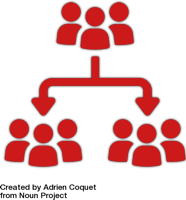In the 2022 IEEE International Conference on Pervasive Computing and Communications Workshops and other Affiliated Events (PerCom Workshops) A key barrier to building performant, remotely managed and self-optimizing multi-sensor, distributed stream processing edge applications is high programming complexity. We recently proposed DataX [1], a novel platform that improves programmer productivity by enabling easy exchange, transformations, … Continue reading DataXe: A System for Application Self-optimization in Serverless Edge Computing Environments
DataX: A system for Data eXchange and transformation of streams
The exponential growth in smart sensors and rapid progress in 5G networks is creating a world awash with data streams. However, a key barrier to building perfor- mant multi-sensor, distributed stream processing applications is high programming complexity. We propose DataX, a novel platform that improves programmer productivity by enabling easy exchange, transformations, and fusion of data streams. DataX abstraction simplifies the application’s specification and exposes parallelism and dependencies among the application functions (microservices). DataX runtime automatically sets up appropriate data communication mechanisms, enables effortless reuse of microservices and data streams across applications, and leverages serverless computing to transform, fuse, and auto-scale microservices. DataX makes it easy to write, deploy and reliably operate distributed applications at scale. Synthesizing these capabilities into a single platform is substantially more transformative than any available stream processing system.
Magic-Pipe: self-optimizing video analytics pipelines
Microservices-based video analytics pipelines routinely use multiple deep convolutional neural networks. We observe that the best allocation of resources to deep learning engines (or microservices) in a pipeline, and the best configuration of parameters for each engine vary over time, often at a timescale of minutes or even seconds based on the dynamic content in the video. We leverage these observations to develop Magic-Pipe, a self-optimizing video analytic pipeline that leverages AI techniques to periodically self-optimize. First, we propose a new, adaptive resource allocation technique to dynamically balance the resource usage of different microservices, based on dynamic video content. Then, we propose an adaptive microservice parameter tuning technique to balance the accuracy and performance of a microservice, also based on video content. Finally, we propose two different approaches to reduce unnecessary computations due to unavoidable mismatch of independently designed, re-usable deep-learning engines: a deep learning approach to improve the feature extractor performance by filtering inputs for which no features can be extracted, and a low-overhead graph-theoretic approach to minimize redundant computations across frames. Our evaluation of Magic-Pipe shows that pipelines augmented with self-optimizing capability exhibit application response times that are an order of magnitude better than the original pipelines, while using the same hardware resources, and achieving similar high accuracy.
Low-level mapping of key combinations in GNU/Linux (remapping the unremappable)
Keyboard by ainul muttaqin from the Noun Project This is a "brief" tale about how I used uinput and evdev to remap some keys of my latop's keyboard. Using this "low-level" approach it is possible to remap "unreamappable" key bindings, such as Alt+Right to End or Alt+Left to Home. I've been using, almost exclusively, an … Continue reading Low-level mapping of key combinations in GNU/Linux (remapping the unremappable)
UAC: An Uncertainty-Aware Face Clustering Algorithm
We investigate ways to leverage uncertainty in face images to improve the quality of the face clusters. We observe that popular clustering algorithms do not produce better quality clusters when clustering probabilistic face represen- tations that implicitly model uncertainty – these algorithms predict up to 9.6X more clusters than the ground truth for the IJB-A benchmark. We empirically analyze the causes for this unexpected behavior and identify excessive false- positives and false-negatives (when comparing face-pairs) as the main reasons for poor quality clustering. Based on this insight, we propose an uncertainty-aware clustering al- gorithm, UAC, which explicitly leverages uncertainty infor- mation during clustering to decide when a pair of faces are similar or when a predicted cluster should be discarded. UAC considers (a) uncertainty of faces in face-pairs, (b) bins face-pairs into different categories based on an un- certainty threshold, (c) intelligently varies the similarity threshold during clustering to reduce false-negatives and false-positives, and (d) discards predicted clusters that ex- hibit a high measure of uncertainty. Extensive experimen- tal results on several popular benchmarks and comparisons with state-of-the-art clustering methods show that UAC pro- duces significantly better clusters by leveraging uncertainty in face images – predicted number of clusters is up to 0.18X more of the ground truth for the IJB-A benchmark.
F3S: Free Flow Fever Screening
In 4th International Workshop on EdgeDL: Deep Learning on Edge for Smart Health and Wellbeing Applications (EdgeDL 2021) - Co-located with the IEEE International Conference on Smart Computing (SMARTCOMP 2021) Identification of people with elevated body temperature can reduce or dramatically slow down the spread of infectious diseases like COVID-19. We present a novel fever-screening … Continue reading F3S: Free Flow Fever Screening





